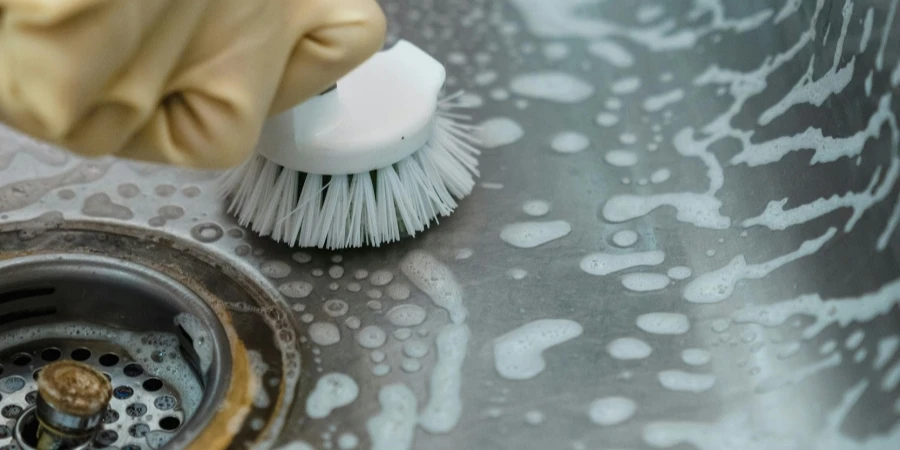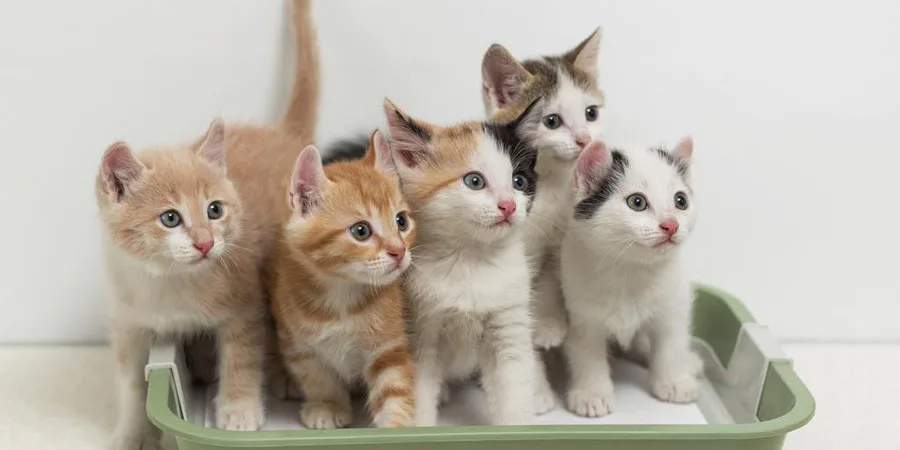In the rapidly expanding pet care market, selecting the appropriate cat litter box transcends mere convenience—it shapes the daily comfort and well-being of felines. As pet owners increasingly seek products that combine ease of use with innovative features, understanding the variations and functionalities of cat litter boxes becomes crucial. These products are designed not only to accommodate the natural behaviors of cats but also to integrate seamlessly into varied living spaces, thus offering practical solutions for cleanliness and odor control. For businesses, keeping abreast of these advancements and preferences ensures alignment with consumer expectations, enhancing their ability to meet demand with precision.
Table of Contents
1. Varieties and functions of cat litter boxes
2. Market trends in cat litter boxes
3. Key considerations in product selection
4. Leading cat litter box models and features
1. Varieties and functions of cat litter boxes

The cat litter box market has diversified significantly, reflecting both technological advancements and changing preferences within pet care. These products now range from basic designs to highly sophisticated models, each serving unique aspects of usability and hygiene.
Different types of litter boxes
The market offers a variety of litter boxes that cater to different needs and preferences. Open-top litter boxes are widely appreciated for their simplicity and ease of access, making them a preferred choice for many cats and their owners. These are typically less expensive and easier to clean, but they may not be the best at containing odors or litter.
Covered litter boxes provide a private space for cats, which can be crucial for shy or nervous pets. These models help contain odors and litter but can be more challenging to clean and may deter some cats from using them due to the restricted entry and exit.
Self-cleaning litter boxes represent the intersection of convenience and technology in pet care. These boxes automate the cleaning process, using sensors and mechanical components to remove waste without human intervention. While they offer significant convenience, they require a higher initial investment and may not be suitable for all cats, particularly those frightened by mechanical noises.
Disposable litter boxes are designed for convenience and portability, ideal for travel or temporary setups. Made from recyclable materials, these boxes offer a hassle-free solution to cat waste management but can be less cost-effective in the long run compared to reusable options.
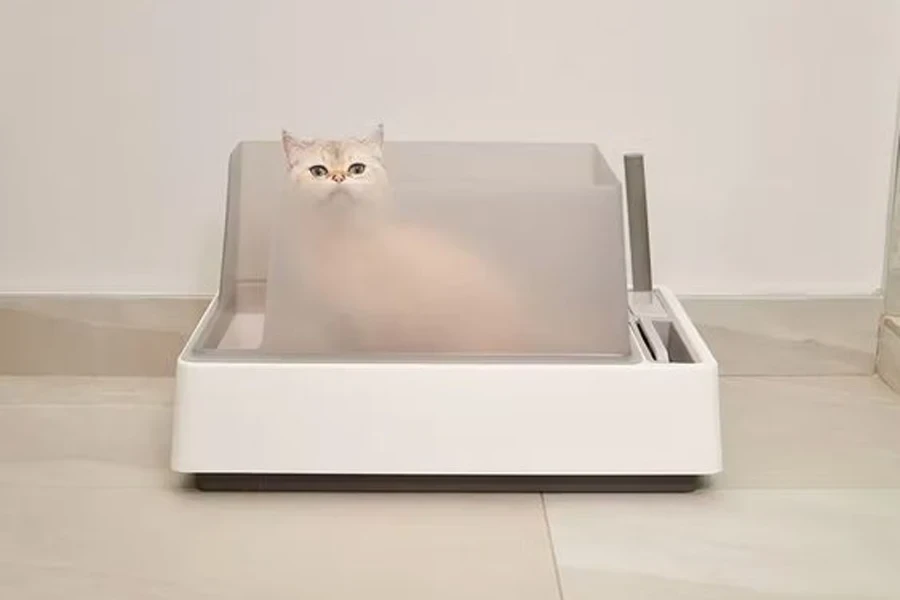
Functional benefits of each type
Each type of litter box serves distinct functional benefits that can align with different lifestyles and pet care philosophies. Open-top boxes, for instance, are not only easy to clean but also provide ample room for cats to move around, which can be more comfortable for larger breeds. Their simplicity and affordability make them an accessible choice for many cat owners.
Covered boxes, while more complex, add value by minimizing odors and offering cats a sense of security. For households with multiple pets or small children, these can provide a necessary refuge for a cat needing privacy.
Self-cleaning models, although more expensive, are particularly beneficial in busy households where time constraints might make regular cleaning challenging. They also help monitor the health of pets by keeping the litter area consistently clean and odor-free.
Disposable boxes offer unique advantages for short-term use, such as during travel or in multi-cat households that require frequent litter changes to maintain hygiene. They eliminate the need for regular cleaning and are often made from eco-friendly materials, contributing to environmental sustainability.
By understanding these distinctions and functional benefits, businesses can better stock and recommend products that meet the specific needs of their clientele, enhancing both customer satisfaction and operational efficiency.
2. Market trends in cat litter boxes

The cat litter box market is experiencing significant growth, driven by evolving consumer preferences and the introduction of innovative products. As pet ownership increases globally, the demand for more sophisticated and convenient pet care solutions is driving market expansion and product diversification.
The global cat litter box market was valued at USD 1.8 billion in 2022 and is projected to reach USD 2.62 billion by 2030, growing at a CAGR of 4.8% from 2023 to 2030. Dominated by North America, which holds over 35% of the market share due to high demand and increased hygiene awareness, the market sees the electric/automatic segment as its largest and fastest-growing category. Key drivers of market growth include an increase in pet-friendly households, heightened awareness of zoonotic diseases, urbanization trends, and rising cat adoption rates in the Asia-Pacific region.
Current market dynamics
Recent market analyses indicate a robust expansion in the cat litter box industry, with projected growth rates suggesting a dynamic shift towards more specialized and technologically advanced products. Consumer preferences are increasingly leaning towards solutions that offer greater convenience and hygiene. The trend is notably toward electric and automatic types, which promise to simplify the pet care routine. The market is not only expanding in terms of product variety but also through a surge in online sales channels, which are becoming a preferred shopping destination for pet care products.
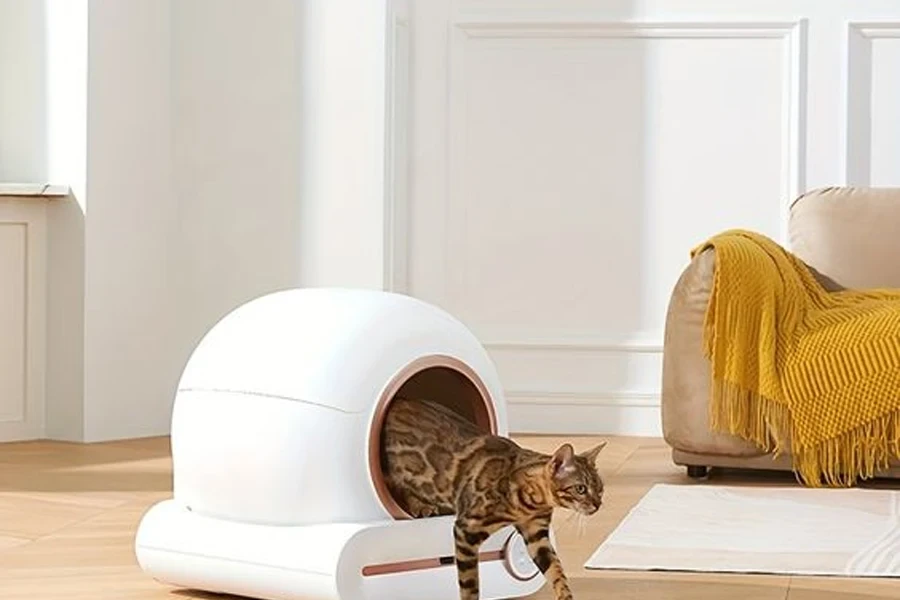
Innovations and sustainability
Innovation in the cat litter box market is rapidly advancing, with manufacturers focusing on creating more sustainable and user-friendly products. New designs now incorporate materials that are easier to recycle and more environmentally friendly. For example, some newer models use biodegradable materials that contribute to a lower environmental footprint. Technological advancements are also evident in the development of self-cleaning litter boxes, which are designed to provide optimal hygiene without frequent human intervention.
The focus on sustainability extends to the production processes as well, with many companies looking to reduce their carbon footprint. Additionally, modern litter boxes are increasingly being designed with the user experience in mind, featuring enhancements that reduce odor and simplify maintenance tasks. These innovations not only enhance the appeal of the products but also align with the growing consumer demand for eco-friendly and high-performance pet care products.
Understanding these trends is crucial for businesses aiming to capitalize on the expanding market. By aligning their offerings with consumer expectations and the latest innovations, companies can ensure they remain competitive in a rapidly evolving industry.
3. Key considerations in product selection
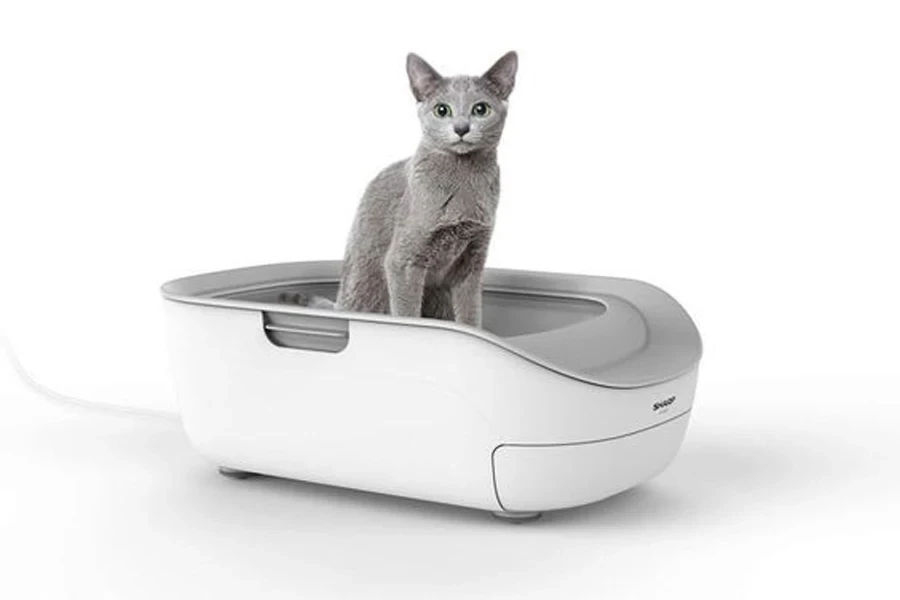
Selecting the right cat litter box involves understanding a variety of factors that can impact both the pet’s satisfaction and the ease of maintenance. Factors such as size, material, and cleaning mechanisms play crucial roles in the suitability of a litter box for different living spaces and cat behaviors.
Size and space compatibility
The size of the litter box is critical as it must accommodate the cat comfortably, allowing enough room for the cat to turn around and perform its natural behaviors without constraint. Litter boxes that are too small can discourage use, leading to undesirable behaviors such as eliminating outside the box. Similarly, the litter box should fit appropriately within the owner’s living space, not obstructing daily activities or cluttering small living areas. For owners living in smaller apartments, compact designs or multi-functional litter boxes, which can also serve as furniture, offer practical solutions.
Material and durability
Materials used in the manufacturing of litter boxes vary widely, from plastics to more sustainable options like biodegradable materials. Each material offers different advantages concerning durability and ease of cleaning. Plastic boxes are lightweight and inexpensive but can absorb odors over time and may need frequent replacement. More innovative materials, such as recycled or plant-based plastics, offer environmental benefits and may also feature improved durability and odor resistance. Stainless steel, although less common, is a durable option that doesn’t absorb odors and is easy to clean, though it may come at a higher price point.
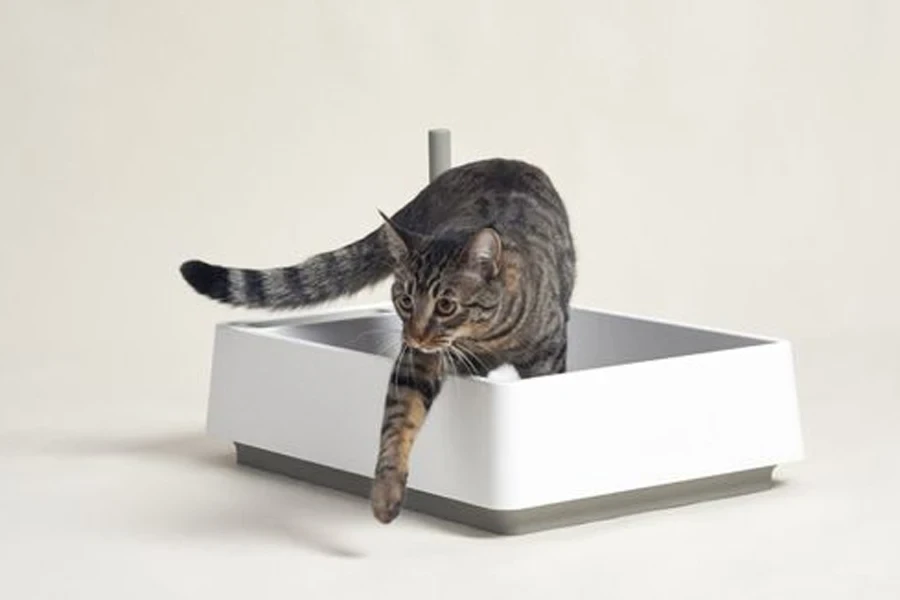
Ease of cleaning and maintenance
The design of the litter box significantly affects how easy it is to clean. Traditional litter boxes require manual scooping and regular cleaning to prevent odors and maintain hygiene. Self-cleaning litter boxes automate this process, using mechanical rakes or rotating mechanisms to sift and remove waste, which can be particularly beneficial for owners with limited time or physical disabilities. However, these automatic systems may require specific types of litter and regular checks to ensure they are operating correctly and are generally more expensive. The choice between traditional and automated systems often depends on the owner’s budget, the number of cats, and personal preferences for convenience versus control over the cleaning process.
Understanding these key considerations helps in making informed decisions about which products to stock or recommend, ensuring that they meet the varied needs of consumers and contribute to overall pet welfare and owner satisfaction.
4. Leading cat litter box models and features
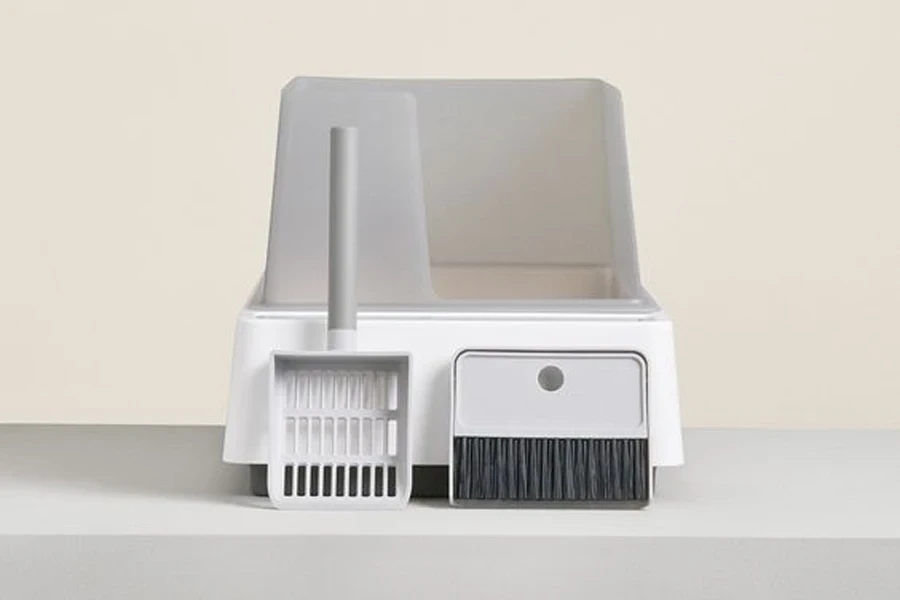
The market offers a diverse range of cat litter boxes, each tailored to meet specific consumer needs such as ease of maintenance, aesthetic appeal, and advanced functionality. Here we explore the leading models and conduct a comparative analysis to aid in selection.
Top models on the market
The leading models on the market distinguish themselves through unique features that cater to different preferences and requirements. For example, the Frisco High Sided Cat Litter Box is favored for its spacious design and high sides, making it ideal for larger breeds or cats that prefer a more open environment to manage their litter. Another popular choice is the So Phresh High-Back Corner Grey Litter Box, which utilizes a corner-fit design to save space while still providing ample room for the cat to maneuver.
For those seeking advanced technology, the Modkat Flip Litter Box offers an innovative lid design that flips out of the way for easy access and cleaning, combined with a sleek, minimalist look that appeals to modern aesthetics. The Catit Airsift Litter Pan Jumbo is also notable for its large size and hood that lifts for effortless scooping, catering to both pet and owner comfort.
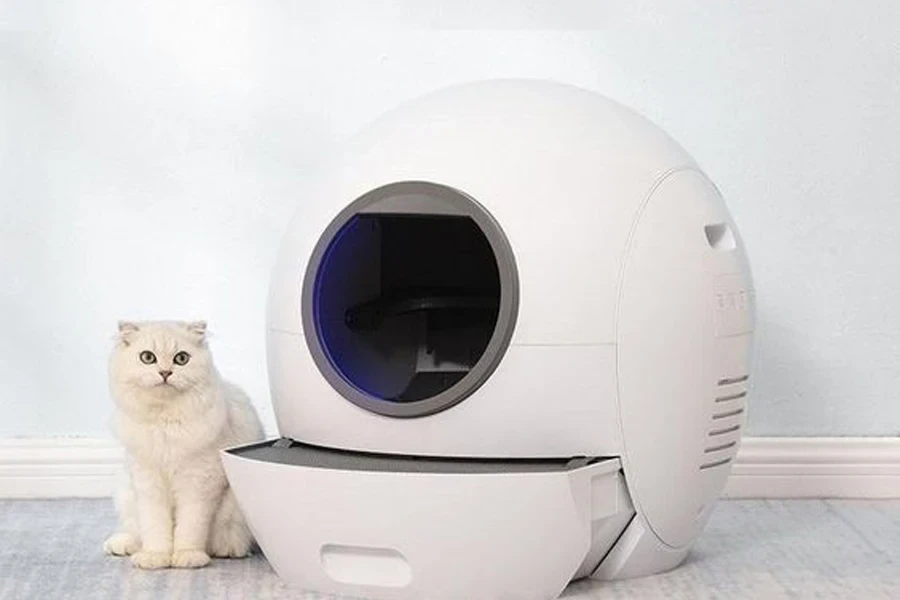
Comparative analysis
In comparing these models, functionality often aligns closely with specific user needs. The Frisco model, with its simple yet effective design, offers durability and ease of cleaning, suitable for busy cat owners who need reliability without additional features. In contrast, the Modkat Flip integrates style with function, appealing to those who place a premium on their home’s decor.
The So Phresh box’s unique corner design makes it an excellent choice for apartment dwellers or those with limited space. Its high back and sides help contain litter, making it both practical and space-efficient. Meanwhile, the Catit Airsift is best for those who prioritize hygiene and ease of maintenance due to its innovative sift technology and large, accessible design.
Each of these models has been developed with the end-user in mind, offering different benefits depending on the cat’s behavior patterns and the owner’s lifestyle. The choice between them often depends on specific preferences for aesthetics, ease of maintenance, and space utilization, all critical factors in ensuring both the pet and owner’s satisfaction.
Conclusion
The global cat litter box market is on a trajectory of growth, projected to reach USD 2.62 billion by 2030, with innovations in design and technology driving this trend. As online retailers adapt to changing consumer preferences and technological advancements, they stand to benefit from offering a variety of cat litter box options that cater to space efficiency, ease of maintenance, and aesthetic appeal. The market’s expansion is particularly bolstered by the increasing number of pet-friendly households and the rising demand in the Asia-Pacific region, setting a promising landscape for continued evolution and opportunity in this sector.

